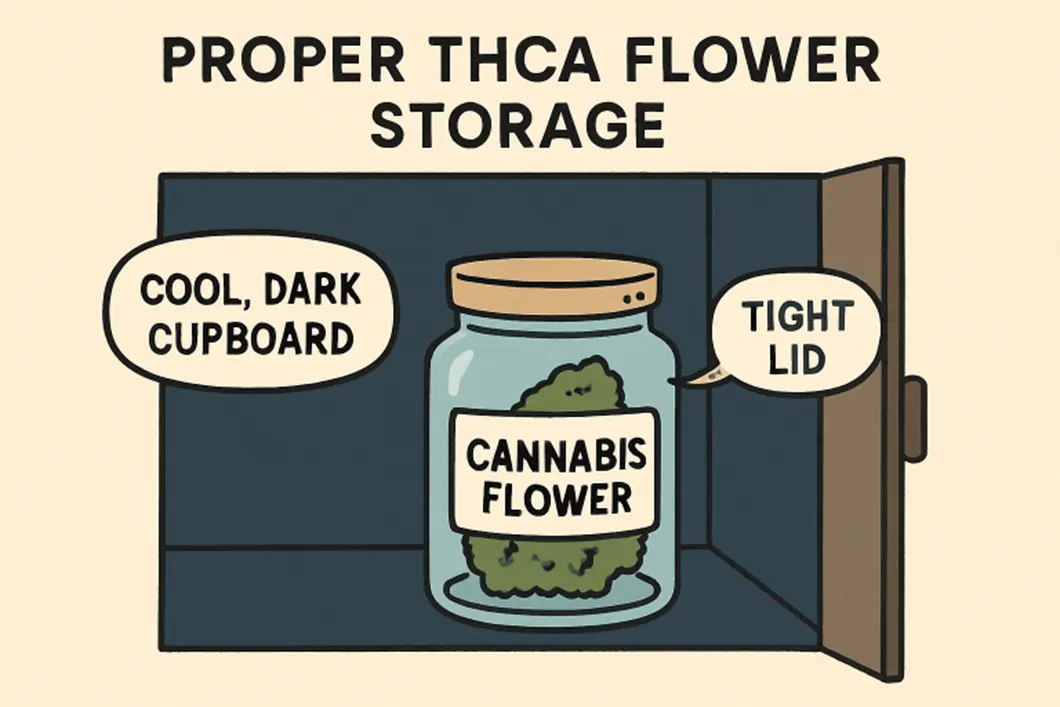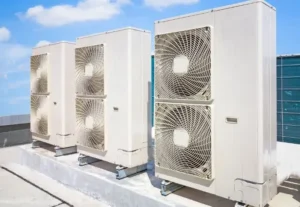Introduction
THCA flower has gained attention for its potent cannabinoid content and non-psychoactive effects before decarboxylation, making it a sought-after product for both wellness and recreational users. To experience the full benefits of your THCA flower product, it’s crucial to understand and implement optimal storage and handling strategies to preserve its freshness, flavor, and potency.
THCA is highly sensitive to environmental factors like light, heat, and humidity. Suboptimal storage can accelerate cannabinoid degradation, diminish aroma, and even promote mold growth, reducing the efficacy of your flower. That’s why this guide explores the most effective methods and tips for storing and using THCA flower, so you can enjoy every gram at its best quality from the first use to the last.
By carefully following these guidelines, you protect your flower investment and improve your overall experience, whether you’re interested in the therapeutic benefits or aiming for a flavorful, robust session. Read on for practical advice that reflects both expert recommendations and industry best practices.
From container selection to avoiding harmful moisture and temperature issues, the steps you take now will determine the longevity and quality of your flowers. For anyone who values preservation and potency, using proper storage should be a top priority.
Understanding THCA Flower
THCA (tetrahydrocannabinolic acid) is a cannabinoid present in raw cannabis. Unlike THC, it does not induce psychoactive effects until it is heated through vaping, smoking, or cooking. This characteristic enables users to harness the plant’s natural benefits in their raw state, offering versatility in consumption methods. Because of its delicate chemical structure, THCA is vulnerable to degradation if not stored with care. That’s why proper storage is a fundamental aspect of maintaining product quality, whether for traditional or alternative uses.
Optimal Storage Conditions
To protect core cannabinoids and terpenes, it’s important to store THCA flower in an environment with low exposure to oxygen, stable temperature, and controlled humidity. The recommended parameters are:
- Temperature: 60°F–70°F (15°C–21°C). This range curtails cannabinoid and terpene breakdown caused by heat. Avoid stashing your flower next to heat sources like radiators, stove tops, or electronics.
- Humidity: 55%–62% relative humidity (RH) is optimal to avoid brittle dryness or the onset of mold, both of which can render the flower unusable.
- Light: Ultraviolet rays and bright light rapidly degrade both cannabinoids and terpenes, which not only kills potency but also impairs the nuanced aroma and flavor.
- Air Exposure: Excess oxygen leads to oxidation, diminishing THC content over time. Airtight containers are critical for minimizing this risk.
Choosing the Right Container
Containers play a pivotal role in long-term storage. Glass jars with airtight lids are the gold standard, as they are chemically inert and do not leach substances into your flowers. Opt for tinted or opaque glass to further protect contents from light exposure. Skip plastic bags or plastic containers, which can create static, stripping away precious trichomes, or allow harmful chemicals to seep in over time. Additionally, storing your flowers in a cool, dark place helps preserve their potency and freshness. Avoid areas with high humidity, as moisture can promote mold growth and degrade the quality of your product. Proper container choice and storage conditions are essential for maintaining the integrity and effectiveness of your flowers over time.
Humidity Control
The right humidity levels are essential for preserving the quality of your cannabis, as they help prevent the loss of cannabinoids, protect and preserve the delicate terpenes responsible for flavor and aroma, and effectively keep mold and mildew at bay. Modern humidity packs are sophisticated and engineered to maintain precise relative humidity levels by both absorbing excess moisture and releasing moisture back into the environment as needed, ensuring optimal storage conditions. To use, simply place a humidity pack in your storage container with your flowers and check periodically to ensure it’s functioning correctly. This small but effective investment can significantly extend the freshness and potency of your cannabis, protecting your investment for months or even longer. Trusted and reputable brands are often recommended in authoritative guides and resources provided by established industry sources such as Leafly, which underscore the importance of proper storage methods.
Temperature Management
Consistent, moderate temperatures are best. Dramatic shifts in temperature can cause condensation, leading to mold, or can make trichomes brittle. Avoid window sills, uninsulated garages, or containers left in vehicles. The back of a cool, dark cupboard or a dedicated drawer away from major appliances works well for both daily users and bulk storage. To maintain these conditions, consider using a thermometer to monitor storage areas regularly. Proper ventilation can also help prevent excess humidity and temperature fluctuations. Additionally, storing contents in airtight containers can protect them from environmental changes and preserve their quality.
Light Exposure
Even small amounts of UV light can break down cannabinoids. Always keep your jars or containers away from direct sunlight, and consider using amber or opaque jars for additional protection. This simple precaution helps ensure that neither your flower’s taste nor its wellness benefits are compromised before you’re ready to use it. Proper storage not only preserves potency but also maintains the aroma and freshness of the product. Make sure to keep your storage area cool and dry to prevent mold and degradation. Regularly check your stored cannabis to ensure it remains in optimal condition.
Handling and Usage Tips
- Limit Air Exposure: Open containers only when necessary, as each exposure incrementally oxidizes your flower.
- Use Clean Tools: Use only clean hands or sanitized tools for handling, which guards against introducing dirt, oil, or microorganisms.
- Portion Control: If you use flour frequently, pre-portioning it into single-use or weekly-use containers discourages unnecessary handling, thereby reducing the risk of degradation to your main supply.
Common Storage Mistakes to Avoid
- Plastic Bags: Ditch plastic bags in favor of glass; static charge can strip off trichomes, reducing efficacy. Over time, plastic may also impart off-flavors.
- Cold Storage: Refrigerators and freezers promote excess moisture, causing trichomes to break apart and leading to rapid quality loss. Room temperature is nearly always safer unless you know advanced, vacuum-sealed preservation methods.
- Constant Exposure: Opening your storage container multiple times a day is a recipe for dried-out, odorless product. Get into the habit of planning what you need and accessing only that much at a time.
Following robust storage strategies maximizes the lifespan and efficacy of your THCA flower, aligning your experience with what top industry experts recommend. Preserving potency and safety not only ensures value for your purchase but also protects the many benefits this remarkable cannabinoid offers.
Conclusion
Proper storage and handling are essential to maintaining the potency, flavor, and safety of your THCA flower. By controlling factors like temperature, humidity, light, and air exposure—and by choosing the right containers—you can significantly extend your flower’s lifespan and preserve its beneficial properties. Avoiding common mistakes, such as using plastic storage, working in cold environments, and frequently opening containers, further safeguards quality. Ultimately, implementing these best practices ensures that every session delivers the full aroma, effectiveness, and value that THCA flower has to offer.
Also Read-Choosing Long-Lasting Roofing Solutions for Your Home








